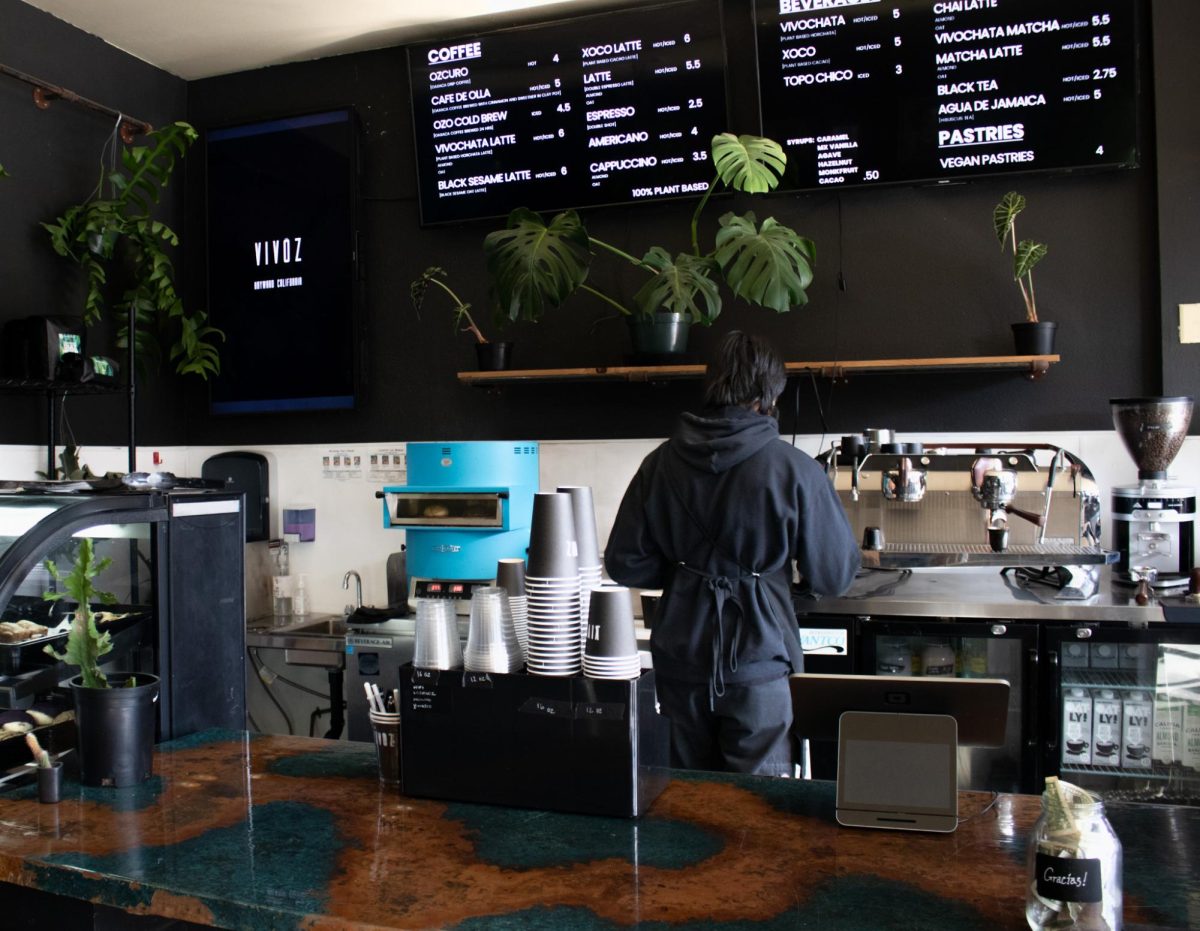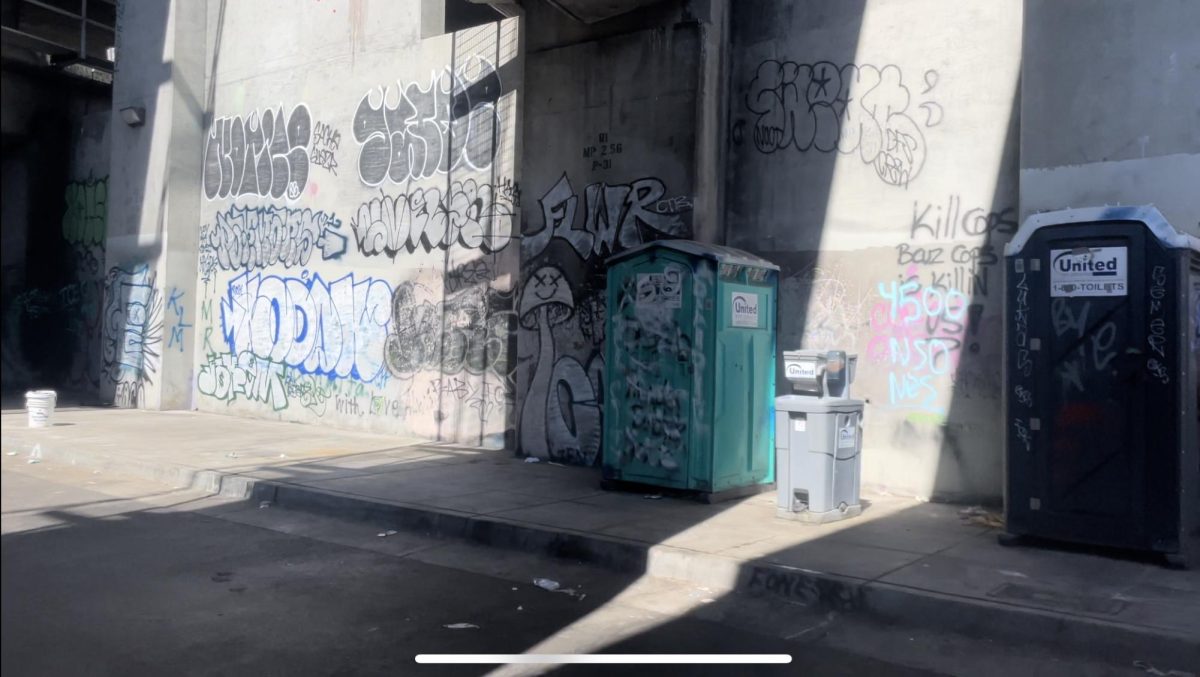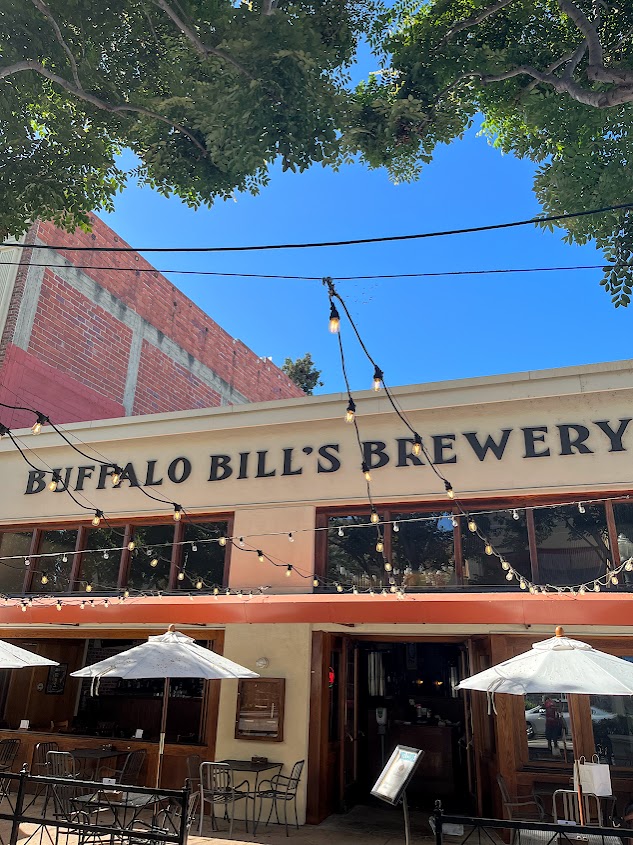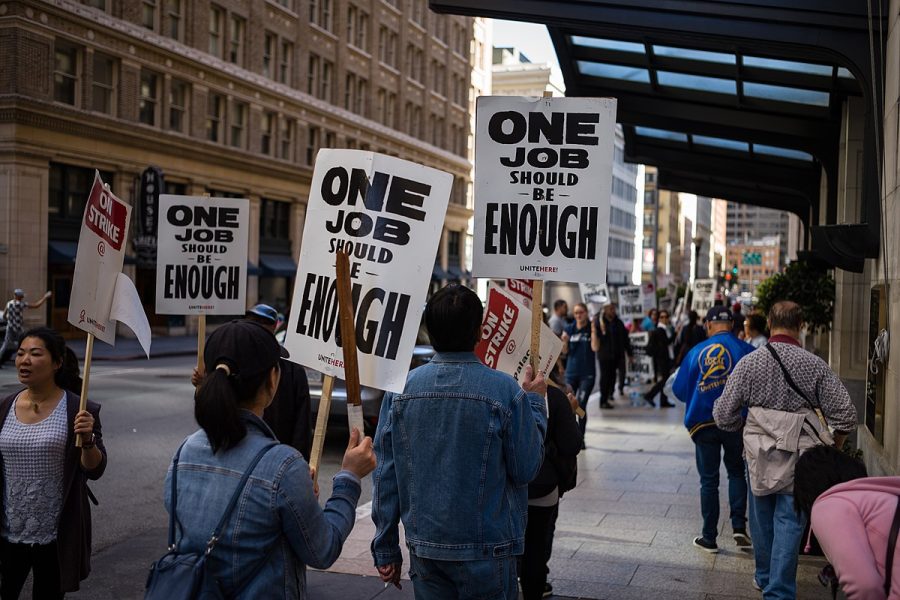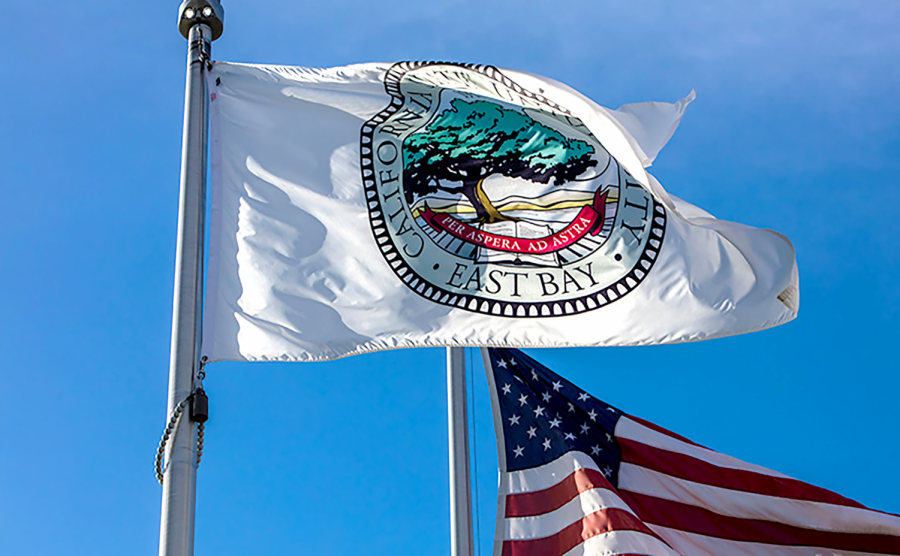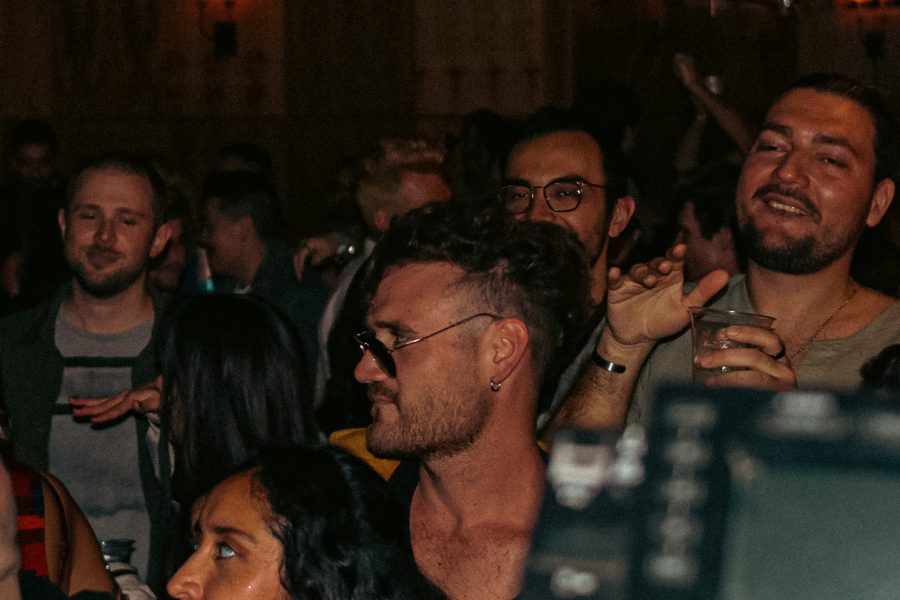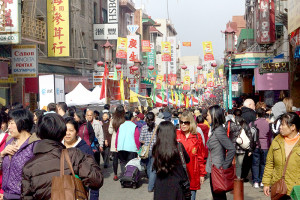
estimated 500,000 people who are primarily of
Asian decent.
Thousands of people flocked to the crowded streets of San Francisco’s Chinatown last Saturday, in preparation for the Lunar New Year on Feb 10.
The weekend long Chinese New Year Flower Fair is a historical event that attracts roughly 500,000 people and nearly 70 vendors selling souvenirs, supplies and good luck charms. Lined from corner to corner the exhibitors come from all over, providing a glimpse into Chinese culture and customs.
“This particular fair we draw 90 percent Asian American, because it’s the Flower Fair,” said Peggy Kennedy, marketing director of the festival. “So the tradition is that prior to the Lunar New Year people come into Chinatown to buy their auspicious flowers and produce. So we make sure we have a lot of vendors here who sell those things.”
Percussion sounds rang out amongst the the fragrant and unfamiliar smells of Chinatown. The smashing of cymbals and drums methodically played, while lion dancers from Leung’s White Crane Kung Fu Association scared off evil spirits.
Daniel Leung, a veteran lion dancer of 30 years says their organization has been featured at the event for over 40 years. Crowds looked on as flamboyant costumes containing the characteristics of lions danced to the drumbeats of traditional music.
Fresh flowers, produce, food, herbal remedies and much more could be found at the vibrant venue. Mimi Chan, head of international marketing for AT&T, said they are a parent sponsor because it is one of “the biggest festivals in the country.”
“This is actually the biggest Asian market in the U.S.; there’s over 30 percent Asian population live in San Francisco and across the U.S. it’s only 5 percent,” explained Chan. “So you have a much greater population here than in the rest of the country.”
The Lunar New Year is the oldest and most widely celebrated Asian holiday in the U.S., says Jenny Chang, a Chinese school teacher.
Chang explained the Lunar New Year represents a “brand new” start for Chinese people. In a thick accent, she explained the tradition of people buying new clothes and supplies, paying off old debts, and cleaning their houses, in preparation for the New Year.
The lunar calendar is one of the oldest methods of telling time and predates the western Gregorian calendar, according to Country Facts. Ancient agriculturally based cultures like that of the Chinese followed the moon solstice, which helped determine the harvest of their crops.
Crops such as citrus fruits symbolize abundant happiness, while leaves from tangerines render secure relationships for the New Year, states the Chinese parade website.
“Flowers and produce always played an important role in Lunar New Year celebrations as winter blossoms into spring,” states the parades website.
Many of the meanings behind the Chinese customs hold significance through shapes and interpretations of symbols.
“It’s supposed to bring you good luck,” explained JW, holding up a grapefruit. The belief stems from its odd-rounded shape and people, primarily the older generations, take baths with grape fruit leaves on New Years Eve to wash away bad luck, according to a grapefruit seller.
“It’s always kind of pointed. Chinese people always say pointed things are good,” JW further explained.
The goldfish is another example of symbolic meaning present at the event. The color and movement of a goldfish signifies the flow of fortune and prosperity, according to a goldfish seller.
The significance of numbers is another tradition passed on from generation to generation at the event.
“Certain numbers like nine means long, but you don’t want four, because it means death,” he said. “So you never use four in anything during Chinese New Year.”
This year marks the year of the Snake, which has less significance than the previous year of the Dragon. “It carries the meanings of malevolence, cattiness and mystery, as well as acumen, divination and the ability to distinguish herbs,” according to Travel China Guide.
For many attendees like William Gee, a general volunteer, the holiday represents a time where people gather with family and close friends.
Gee is a second generation Chinese American, who says he has been teaching his two children about the Chinese traditions. They celebrate with a traditional dinner held on the eve of the New Year and then gather with their entire family the day of the Lunar New Year.
“A lot of it is Americanized, but what we do is try to take bits and pieces,” Gee said. He explains that they incorporate traditions such as passing out the “red envelopes, called lacy, and lucky candy.”
Red envelopes containing cash and candy are traditionally handed out to unmarried children as signs of wealth and prosperity.
Though the event contains historical relevance to Chinese Americans, the holiday is not exclusive to the Chinese culture. Thai, Vietnamese and other eastern cultures also follow the lunar calendar.
Thai Buddhist monks attended, handing out holy water and blessing people with it during the festivities.
Peter Leng, a Thailand Monk from Wat Buddhapradeep Temple, explained the holy water brings people energy and good spirits for the holiday. He added that Thai people took on many of the traditions of the Chinese after they immigrated into Thailand many centuries ago.
Hosted by Southwest Airlines and the Chinese Chamber of Commerce the festival cost roughly a million dollars, which is covered by sponsors and a hotel tax grant, according to Kennedy.
The Chinese New Year Parade will be held this coming weekend on Feb. 10 and is being hosted by the Chinese Chamber of Commerce, who have overseen the event since 1958, according to the parade website.
It started in California in the late 1800s, after the Gold Rush, as a way to showcase the Chinese culture.






